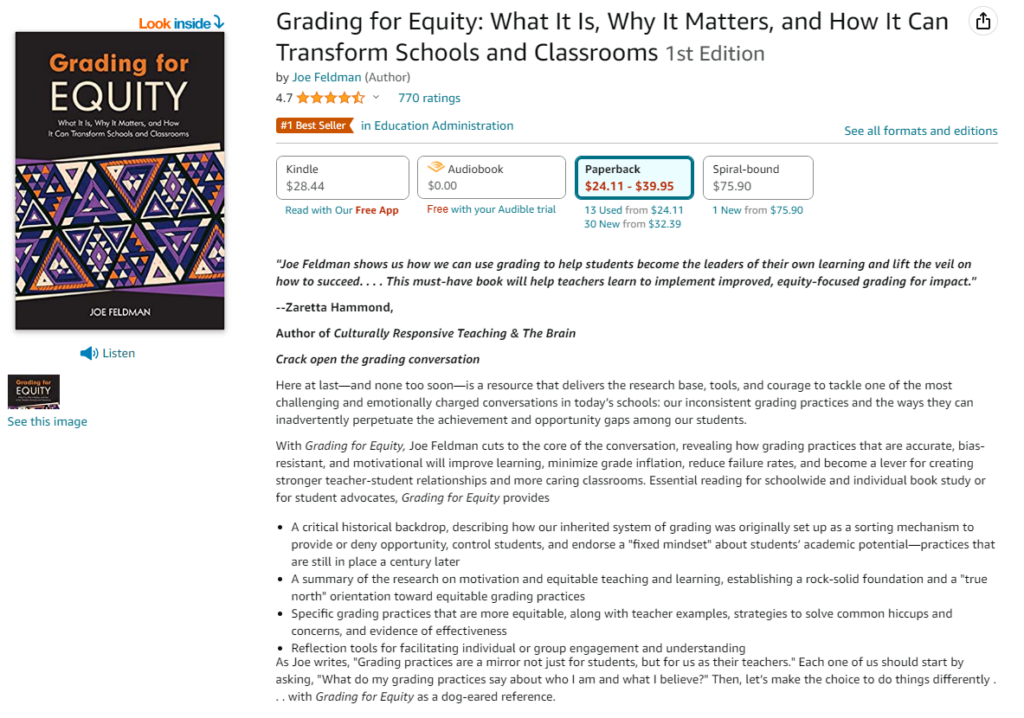
Fairfax County Public Schools provides teachers with training on “grading for equity”; explains that parents asking for data is “a lack of willingness to accept the narrative in the numbers”
Incidents
A concerned community member provided Parents Defending Education with documents from a training course on equitable grading intended for teachers at Fairfax County Public Schools. The course and these documents are not publicly available. They are located on an internal website specifically for staff to access. The syllabus document for the course states: “This course is designed to support educators in understanding the ‘why’ and ‘how’ of implementing equitable grading practices.” The document further explains that “it will support elimination of achievement gaps for students due to common but inequitable grading practices.”
The document also adds that “it will provide tools to ensure that cultural responsiveness is embedded into grading practices of teachers who want grades to reflect learning and understanding of students as opposed to behavior and access to resources.” The phrase “cultural responsiveness” is often used to describe a method of teaching that includes the race and ethnicity of students as part of the lessons taught in classrooms.
The syllabus encourages teachers to read the book Grading for Equity by Joe Feldman. The Amazon description of the book explains that the book shows historical grading practices in a negative manner: “A critical historical backdrop, describing how our inherited system of grading was originally set up as a sorting mechanism to provide or deny opportunity, control students, and endorse a ‘fixed mindset’ about students’ academic potential―practices that are still in place a century later.”

The syllabus document has links to several resources for teachers on grading for equity. One resource is a presentation titled “Navigating Resistance” that provides teachers with scenarios of how parents may resist implementing equity practices. The presentation categorizes people who resist into “thinker,” “doer,” “believer,” “fairness-seeker,” and “minimizer.”
For the “thinker,” the presentation states: “Resistance from the Thinker comes in a variety of ways, all with the same foundational formula: a request for ‘proof’ and the data to back it up.” Teachers are then told: “As the facilitator, have a few data points or research citations prepared.” If the “thinker” continues to persist, the presentation explains: “The data has been there for generations; needing ‘more’ of it is a lack of willingness to accept the narrative in the numbers.”
For the “fairness-seeker,” the presentation explains that resistance “frequently reveals itself in the struggle to differentiate between equity and equality.” The presentation adds in a demeaning manner: “Because the Fairness-Seeker idealizes equality it may be especially challenging for them to believe in systemic racism; a common refrain from white people engaging in this type of resistance is, ‘but I grew up poor!'” To combat a person categorized as a “fairness-seeker,” the presentation tells teachers to “dilute the Fairness-Seeker’s voice with other voices in the room.”
When discussing the “believer,” the presentation uses the word “mansplaining.” The presentation states: “If this person aligns with privilege, remind them they need to recognize how they may be marginalizing other people in the room. This is especially true when they believe they can explain the -isms being discussed (ex: mansplaining); encourage them to be listeners and learners instead.”
Stay Informed

